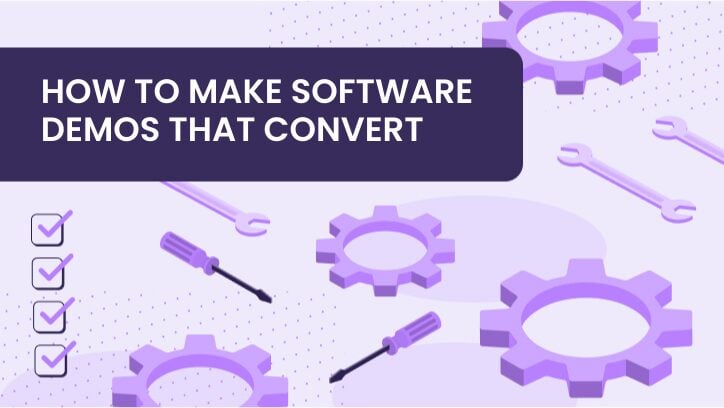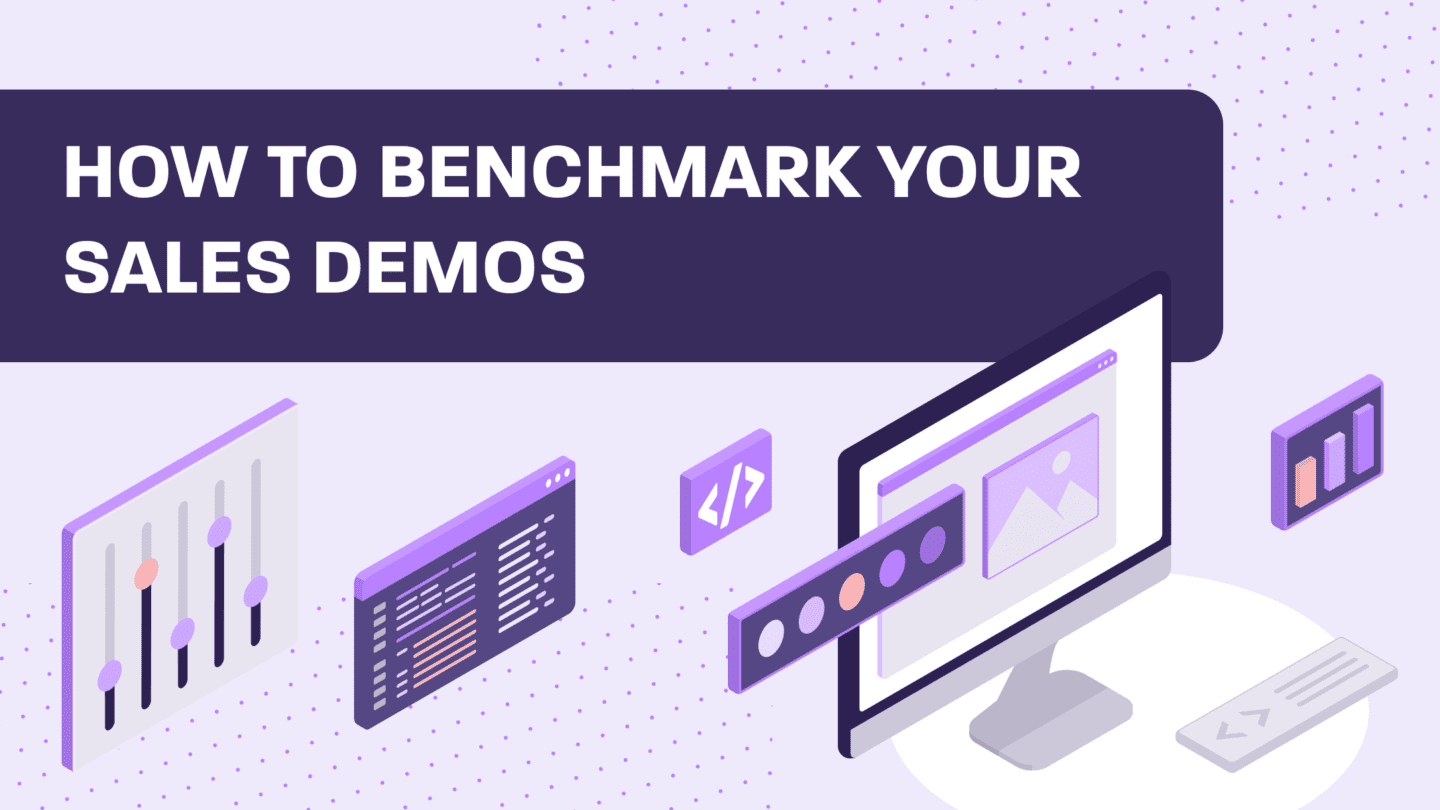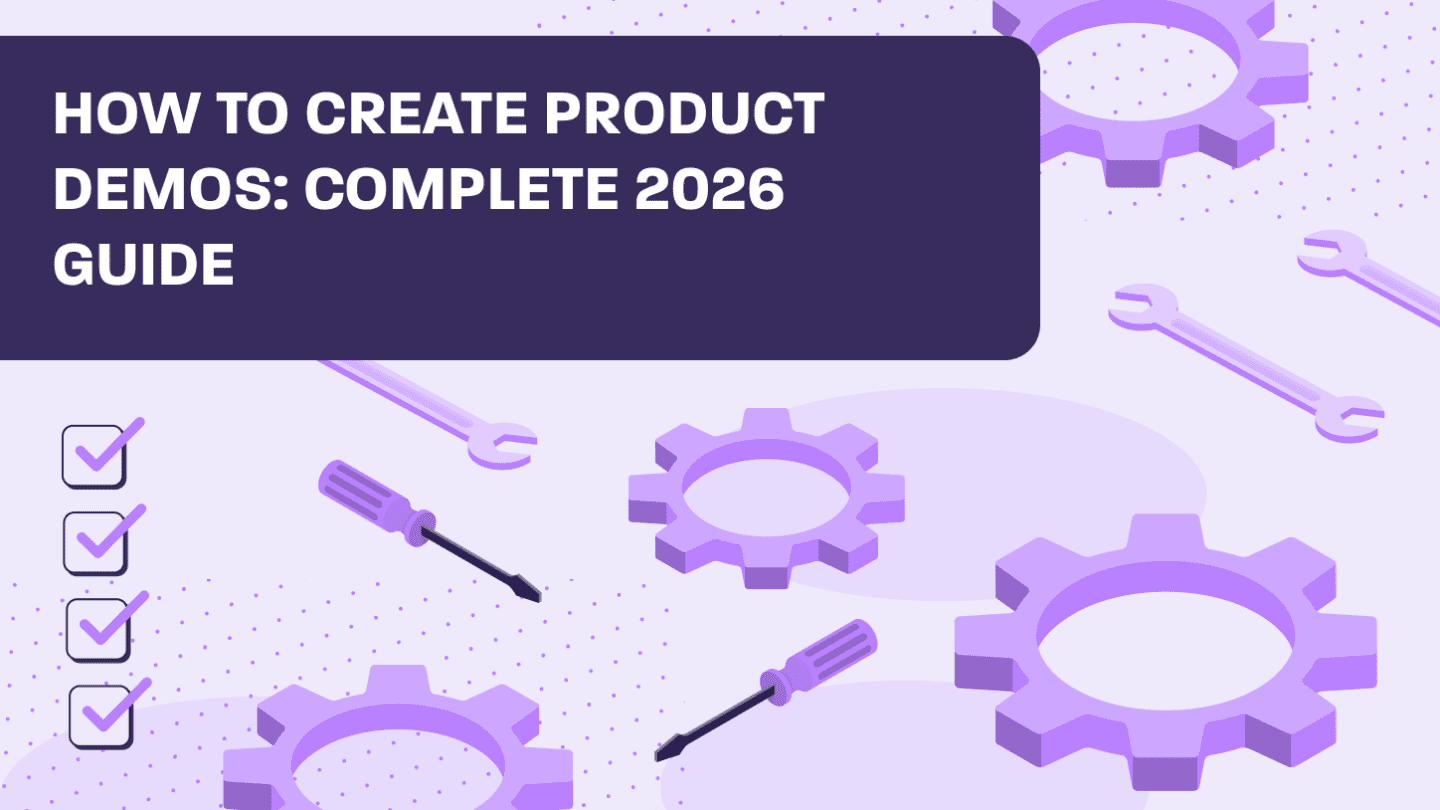If you sell SaaS, you need to know how to make software demo experiences that do more than show a great list of features. Great demos can accelerate discovery, create a clear value narrative, and give champions an easy way to sell you internally.
This guide breaks down exactly how GTM teams at SaaS companies can make software demos that win, whether you’re building marketing tours for top of funnel or non-linear sales demos for AEs and SEs.
Who this guide is for
- Marketing teams devloping website product tours, create campaignsm and organize event experiences.
- Account Executives who perform first-call and multi-threaded evaluation activities.
- Solutions Engineers use this guide to demonstrate technical compatibility as well as conduct deep analysis and Proof of Concepts (POCs)
Set the goal before you make the software demo
Start with the end in mind. Think about a one-sentence success metric you want to realize as the product of the demo. For example: “If a Director of RevOps watches 3 minutes and clicks the Forecasting view, they book a 30-minute discovery.”
Here are a few examples of goals, by demo type:
- A marketing tour consists of newsletter signup or requests for live demos or identification of ICP hand-raisers. Think through your current company or department OKRs and if these goals can help you reach these goals.
- The first sales call evaluation includes problem fit confirmation together with use case qualification and next step alignment. If you walk away with a strong sense that your solution can truly bring value to your prospect then you know you’re on the right track
- The technical deep dive requires assessment of integrations along with data model evaluation and permission management and scale verification. Here the goal might be that more questions and further evaluation is necessary to ensure your solution fits into the current tech stack.
Choose the right demo type for the job
- Linear Demo A linear tour follows a structured path which leads users through a 60–120 second journey to answer “What is this and why should I care?” We’ve seen a lot of marketing use cases fit into this category. This type of tour functions best as an embedded element on websites and campaign pages.
- Non-linear Demo A non-linear sales demo provides users with adaptive selection between different paths that adjust based on their role or industry or workflow requirements. The selected demo format works best for AEs and SEs when they demonstrate both product purpose and operational functionality for their specific needs.
- Live Call Walk-through The Live call walk-through serves as a short sequence of steps that feature predetermined transitions. The first and second calls should use these as their fundamental elements.
- Interactive Leave-behind An interactive leave-behind functions as a shareable summary that internal stakeholders can distribute to prevent demo content from starting from scratch between meetings.
Pro tip: The Walnut platform enables users to separate core story elements from persona branches through templates which allows AEs to customize content without disrupting the narrative flow.
The story requires scripting through outcomes instead of features
Every demo needs to follow a basic structural framework.
- The buyer uses their own words to present the problem.
- The solution provides a guarantee of time efficiency together with risk reduction and revenue generation capabilities.
- Three evidence points which demonstrate rather than explain
- The presentation concludes with a specific request to advance to the next stage.
Talk tracks should be concise:
- The opening segment should last thirty seconds. The presenter needs to describe the task objective.
- Each of the three scenes requires 60-90 seconds to complete. The connection between features and results needs explanation.
- The ending segment requires thirty seconds to both validate value and introduce the following step.
Assemble assets the smart way
The process of creating software demos at scale requires the following approach:
- Maintain a governed library which contains your most effective screens and flows.
- The assets should contain both HTML captures and media elements to handle non-web products and mobile applications as well as prototypes.
- The system enables users to develop variant blocks which work for different personas and industries.
- The system should include pre-loaded variables that include company name alongside role and industry information to speed up the personalization process.
Pro tip: In the Walnut platform, the Screens Library lets you combine static images, GIFs, and MP4s with captured HTML to build demos for web, desktop, or Figma concepts without engineering help.
Personalize without chaos
The level of personalization should feel specific but remain safe and repeatable.
- Tokenize the obvious fields (company, role, industry).
- Swap one scene for each persona rather than rewriting the entire demo.
- Keep the “golden path” intact so your value story stays consistent.
Governance checklist:
- Version control on templates
- Role-based permissions
- Brand and messaging guardrails
Deliver the demo where it converts
Make your software demo easy to consume before, during, and after calls.
- Website and campaigns: The linear tour should be embedded within high-intent pages located on the website and campaigns section.
- Outbound and nurture: The email links direct users to non-linear role-based paths within the demo section.
- Live meetings: Drive the call from the same demo you send as a recap.
- Post-call: After the call the champion should receive an interactive leave-behind which enables them to explore the demo independently.
Advanced move for RevOps: Use CRM fields to trigger which demo or Deal Room variant gets created for an opportunity. This saves SE hours and keeps delivery consistent.
Measure and learn
What get’s measured get’s managed. If you can’t track it, you can’t coach it:
Track:
- Views, completion rate, and time on key scenes
- Click paths and drop-offs by persona
- Shares and multi-thread spread inside target accounts
- Lift in meeting-to-next-step conversion
Then coach:
- Identify scenes that stall and tighten the talk track
- Double down on proof moments that correlate with booked next steps
- Feed findings back into templates so the whole team benefits
Walnut tip: Use demo analytics to see who viewed what, where they lingered, and what was shared. Pair that with account identification to prioritize follow-ups.
Common mistakes to avoid when you make a software demo
- Too many features, not enough outcomes
- No executive path for non-technical buyers
- Custom one-offs that cannot be reused
- No post-call shareable, which forces buyers to “re-sell” you from memory
- Zero instrumentation, so wins are not repeatable
A ready-to-use outline you can steal
Use this 8-minute outline the next time you make a software demo for a first call:
- 0:00–0:30 Problem and stakes
- 0:30–2:00 Outcome promise with one visual metric
- 2:00–3:30 Scene 1: Primary workflow
- 3:30–5:00 Scene 2: Role-specific value (choose exec, operator, or admin)
- 5:00–6:30 Scene 3: Integration or data moment that proves real fit
- 6:30–7:30 Social proof or quick result
- 7:30–8:00 Next step with a clear ask
Why Walnut is built for teams that need to make software demos at scale
- Build once, personalize fast with reusable, on-brand templates.
- Mix content types with a Screens Library for web and non-web products.
- Stay consistent with governance and permissions that keep the core story intact.
- Prove impact with analytics that show engagement and internal sharing.
- Save SE time by letting AEs handle early stage demos while SEs focus on validation.





